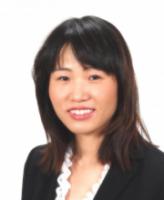
Dr. Ya Wang is an Assistant Professor at the Department of Mechanical Engineering, and the director of the Center for Nanomaterial Energy-Harvesting and Sensing (NES), at the State University of New York, Stony Brook (2013 - date). Before then, she was a Postdoc research fellow at the Department of Aerospace Engineering, the University of Michigan. She received her Ph.D. (2007 – 2012) in Mechanical Engineering from Virginia Tech. Dr. Wang is active in research involving smart materials and structures as applied to energy harvesting, sensing and control. Her work has been sponsored by DOE ARPA-E, DOD ONR, DOT UTRC, and local industrials. Dr. Wang was awarded 2015 Special Congressional Recognition. She has authored 1 book chapter, 19 journal papers and 21 conference proceeding papers and filed 4 U.S. provisional patents. She is an editorial board member for the International Journal of Mechanical Systems Engineering. She is a member of ASME, SPIE, AIAA and IEEE. To date, she has mentored four semifinalists of the Intel/Regeneron Science Talent Search (2014-2017), who are now studying at UC Berkeley, Caltech, Stanford and U Penn. Her research and education achievement have been reported by worldwide mainstream and social media at least 100 times.
Vibration energy harvesting is a demonstrated solution to power sensors, and even low power actuation systems. Most ambient vibration is rectilinear and broadband in nature and is particularly rich in the low-frequency regions. They exist in many different environments, encompass significant energy potential, and can be extracted with little to no (or even beneficial, e.g. damping control) impact on the environment. Examples include vibrations induced by large infrastructures (i.e. bridges, buildings) and our daily activities. Despite being plentiful, however, harvesting vibrational energy presents several challenges: the vibration is often irregular (non-sinusoidal), rectilinear, low frequency (<25 Hz) and broad in bandwidth. This talk will review and discuss some of the recent nonlinear strategies to address these challenges. These harvesting principles are elaborated and illustrated through several configurations and applications. The first example examines the input-dependence of a nonlinear piezoelectric cantilever with external magnetic arrays. The second example is focused on a dual resonant harvester relying on a rectilinear-to-rotary motion transformer with intrinsic frequency up-conversion. Both examples (among others) are often seen in large infrastructures. This presentation will also review and highlight some advanced vibration control law.
Lindsay Walton
lwalton@ucsd.edu
(858)822-3273
